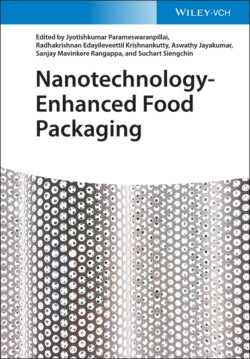Читать книгу Nanotechnology-Enhanced Food Packaging - Группа авторов - Страница 18
1.4.2 Nanotechnology Applications in Food Safety Issues
ОглавлениеIn addition to all of the benefits for the food sector in nanotechnology, the protection in nanomaterials cannot be overlooked. Many researchers have tackled nanomaterial protection issues, with an emphasis on the potential transfer of nanoparticles from packaging to food and their impact on the health of customers. Nano-packaged food products must be acquired in more studies to determine the danger of its nanocomponents because its physicochemical properties in nanostats are completely different from those of macrostats. Furthermore, the small size of such nanomaterials will raise the likelihood of body and tissue bioaccumulation. Dissolution is caused by several influences including the composition of the soil, concentration, soil strength, aggregation, and adsorption of particles [3, 31, 32].
The value of the application of nanometer-scale structures in the food industry has also increased in recent years, and research efforts in this field have been strongly oriented. As nanobiotechnology advances, devices or materials dependent on this technology become less and more responsive. Its applicability in the fields of food packaging and food safety is well known. Promising findings were also obtained for food safety nanomaterials that can protect food against heat, contaminants, and harsh environmental conditions (Figure 1.2). They deliver excellent logistics systems for the delivery of bioactive compounds to the targeted body tissue sites. In the use of nanotechnology in the food system, consistency in the safety risks and environmental impacts should be the priority, and compulsory testing of the relevant nano-foodstuffs until they can be used in the market is necessary [2, 33].
Figure 1.2 Diverse applications of nanotechnology in the food industry [3].
